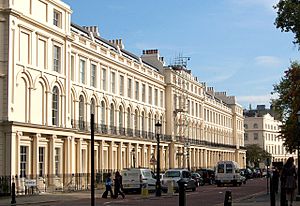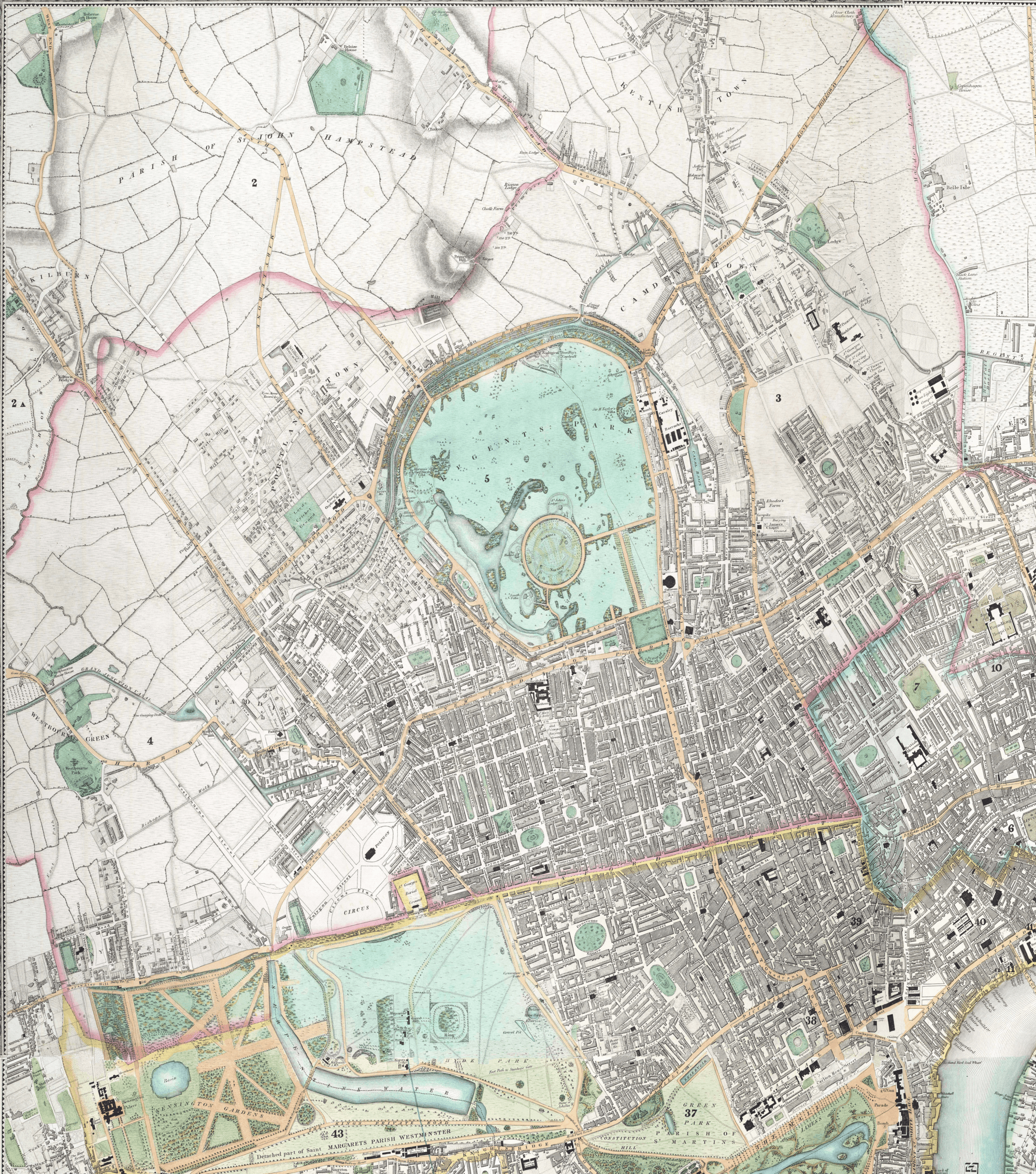Park Square, London facts for kids
Park Square is a large, beautiful area in London, right next to Regent's Park. It's like a private garden space. A busy road called Marylebone Road separates it from another green area, Park Crescent.
Park Square has two rows of huge, fancy houses facing each other. These houses were designed by a famous architect named John Nash. They were built between 1823 and 1824. The houses are made of a special material called stucco, which makes them look smooth and grand. They also have pretty balconies and a long row of columns called a colonnade.
Around the corners of Park Square, there are shorter rows of similar houses. These are called Ulster Terrace, Ulster Place, St Andrew's Place, and Albany Terrace. All these buildings are very important and are protected as Grade I listed buildings. This means they are historically very significant.
Park Square Gardens: A Green Oasis
The middle of Park Square is home to Park Square Gardens. These gardens are private and only for the people who live in the surrounding houses. The main road around Regent's Park, called Outer Circle, runs along the north side of the square.
Park Square is mostly in the City of Westminster, which is a historic part of London. However, the eastern side of the square is in the London Borough of Camden.
Did you know that Park Square used to have some amazing attractions? On the east side, there was Britain's first Diorama. This was a special building that showed huge, realistic paintings with cool lighting effects. It was open from 1823 to 1852. A bit further north, there was the London Colosseum, which was even bigger! It held the largest painting ever made. Both places had big lobbies and attracted many visitors. The London Colosseum was taken down in 1874.
The gardens themselves are quite large, covering about 2.5 hectares (that's like 6 football fields!). The distance between the two rows of houses is about 218 meters. The gardens are owned by the Crown Estate, which is a special organization that manages land for the King or Queen. The gardens are usually private, but they open to the public a few times a year during London Gardens Squares Weekends.
The gardens are full of big plane trees. The first of these trees were planted in 1817 to celebrate the peace after the Battle of Waterloo in 1815. There's also a special tree called a tulip tree, known for its unique flowers.
The Secret Nursemaids' Tunnel
One of the most interesting features in Park Square Gardens is the "Nursemaids' Tunnel." This tunnel was built in 1821. It's a private tunnel that connects Park Square Gardens to the gardens of Park Crescent.
Why was it built? The busy road between the two parks was considered dangerous, especially for children. Back then, wealthy families often had nursemaids who would take the children to the park. The residents asked for the tunnel to be built so children could cross safely.
The tunnel's entrances are beautifully designed with special columns. Inside, the tunnel has arched ceilings and brick walls. It's a rare and cool example of old London architecture!
Protected Buildings of Park Square
Many of the buildings around Park Square are very important and are protected by law. The houses on both the east and west sides are listed as Grade I listed buildings. This is the highest and rarest level of protection for historic buildings in England.
The houses at the four corners of the square stick out a little. Their design is very similar to the main rows of houses, and they were built at the same time. These corner houses, along with the shorter rows like Ulster Terrace and Albany Terrace, also have the same Grade I protection.
Even some smaller things in Park Square are protected! Two small buildings used for garden keeping, the railings around the garden, and 18 street lamps are all listed as Grade II. This is the initial category for important historic buildings.
There are also some similar-sized buildings in the northern corners that are not listed. These include 12 Park Square East and 13 Park Square West. They share the same classical look but were built with less expensive materials and labor.



